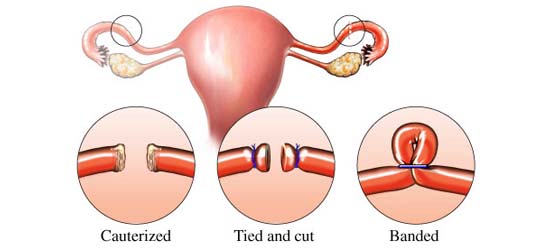Tubal Ligation Reversal or IVF Awareness
{YBA} Doctors says! Tubal ligation or “having your tubes tied” is meant to be a permanent form of birth control. It can be carried out with various methods but ends with the same result.
During a tubal ligation, the fallopian tubes are severed from the uterus to prevent sperm from traveling upwards and finding an egg to fertilize.
Women who have had a tubal ligation and desire to regain their fertility do have options. The two most common procedures are tubal ligation reversal and In vitro fertilization or IVF.
Several factors must be considered when being evaluated for a tubal reversal. Many of these factors may even point to IVF being the best choice.
Tubal Reversal, Factors to Consider
When a woman is considering a tubal reversal, the doctor will first turn to the man. A sperm test should be performed to evaluate the quantity and motility of the sperm. In other words, doctors will be checking to see if the sperm count is high with good quality sperm. If a man’s sperm test returns with poor quality, doctors may suggest IVF instead of a reversal.
Poor quality sperm increases the chance that fertility would still be an issue even with a reversal. A woman’s age is another factor to consider when thinking about a tubal reversal. Naturally, as women age, their egg quality decreases. Increases in age also greatly reduce the success rate of both procedures.
The status of a woman’s uterus and fallopian tubes is another factor used to determine whether or not a tubal reversal is possible. There is a possibility that the uterus was damaged in some way during the initial tubal ligation.
If too much fallopian tube has been removed or otherwise damaged, the probability of a successful pregnancy is low. There is no way to know for sure exactly what condition the existing tubes are in without surgery.
In Vitro Fertilization: The Pros, Cons & Comparisons to Tubal Reversal
In vitro fertilization involves several aspects and medical interventions to create a pregnancy. A woman is given specialized medication to regulate her ovulation and create an environment where several eggs will mature at once.
When the eggs are ready, they are extracted and joined with sperm in a laboratory to hopefully next turn into embryos. Embryos are then implanted into the uterus and the woman is monitored for signs and symptoms of pregnancy.
Most insurance companies will not cover the cost of tubal reversals or IVF treatments. When comparing costs, tubal reversals are noted remarkably cheaper if no complications arise. Individual factors influence the success rates of both procedures.
If a woman is under 35, has a partner with favorable sperm and no complications from her original tubal ligation the chances of a successful pregnancy are higher. There is still a chance after the surgery, even with the most favorable odds, that a pregnancy does not result.
The IVF procedure has many advantages over a tubal reversal. First, the woman does not have to under go a major surgery. With a tubal reversal, it can take over a year of attempts before a pregnancy is achieved. With IVF, women can find out less than 2 weeks after the procedure whether they are pregnant or not.
Women who choose IVF will also not need to worry about future birth control methods. The IVF procedure is also more readily available to be performed then a tubal reversal. Finding a physician who is skilled and specializes in tubal reversals can be difficult.
An advantage to reversal is if the reversal is successful, no further medical interventions should be necessary to get pregnant. With IVF, if a pregnancy is not successful, the entire process will have to be repeated.
IVF or Tubal Reversal, Weigh Your Options Carefully
When making the decision between tubal reversal surgery and IVF, a woman needs to thoroughly discuss her options with her doctor. There are both advantages and disadvantages to each procedure.
Depending on where you reside, both procedures could end up costing the same amount. There is always a chance that the tubal reversal will be unsuccessful and IVF will still be needed. The choice is a very personal one and individual factors contribute to the likely hood of each procedures success.

